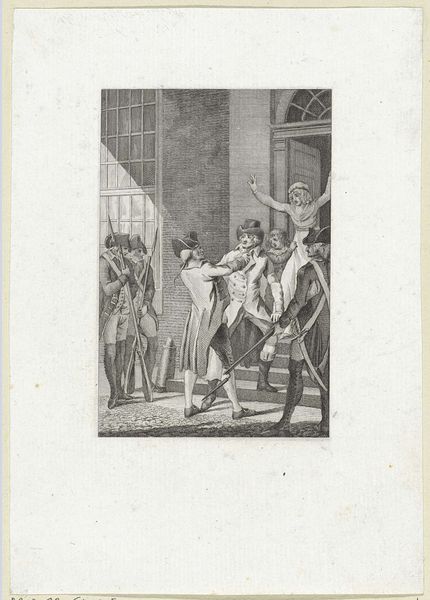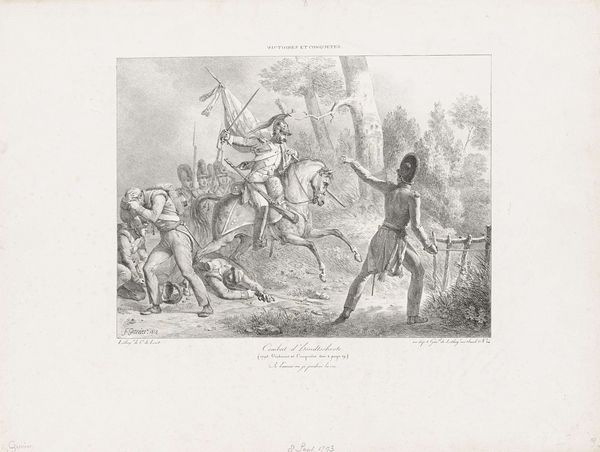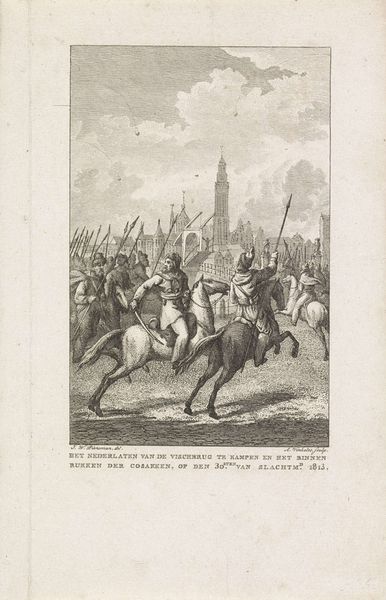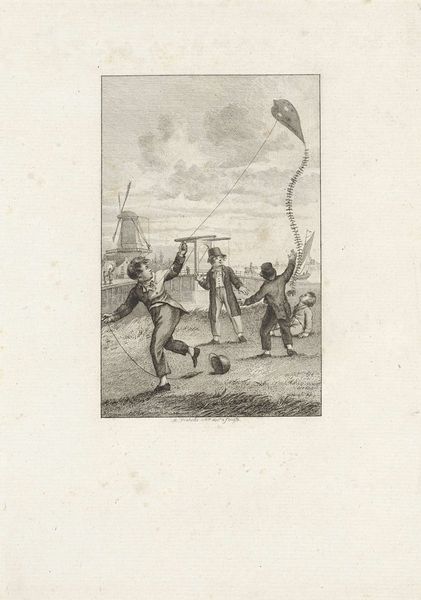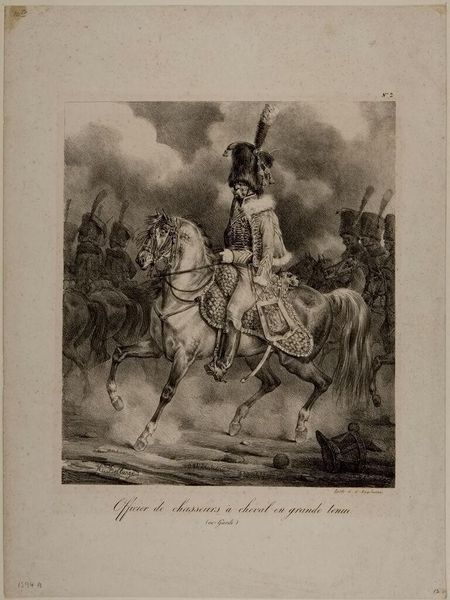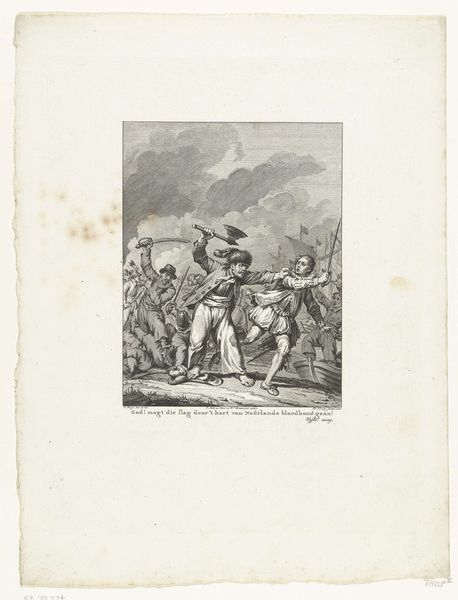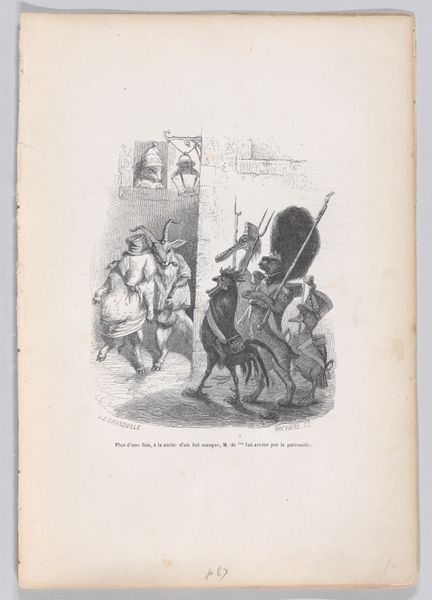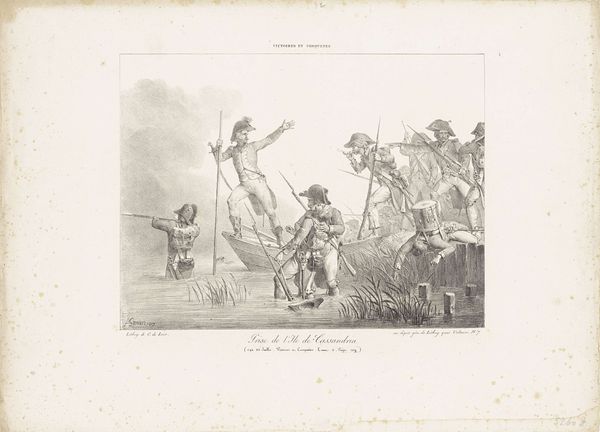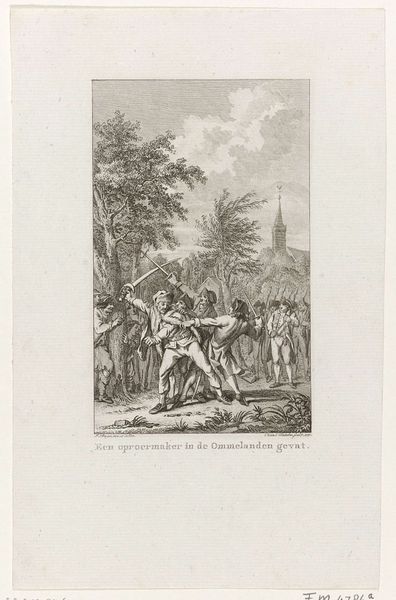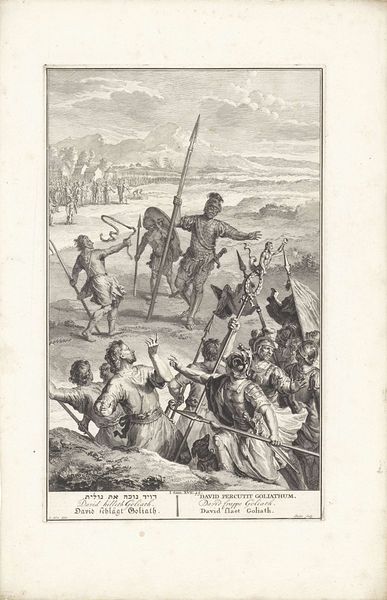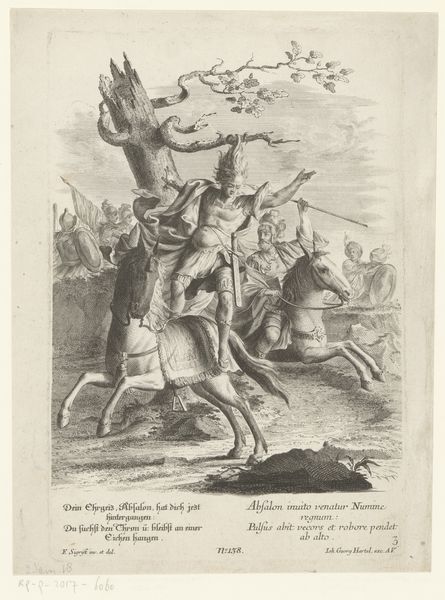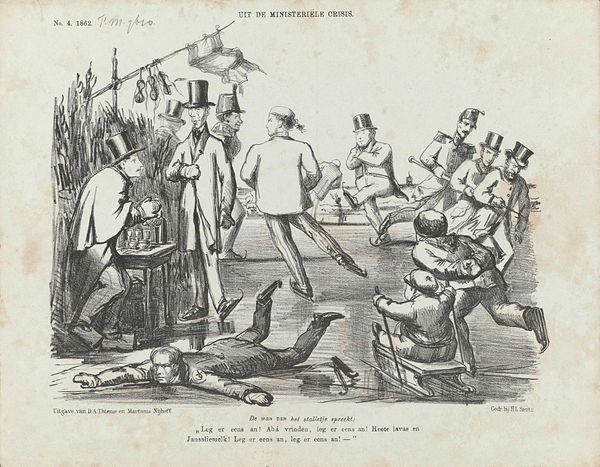
engraving
#
narrative-art
#
old engraving style
#
landscape
#
figuration
#
romanticism
#
history-painting
#
engraving
Dimensions: height 224 mm, width 144 mm
Copyright: Rijks Museum: Open Domain
Editor: This engraving, "Kozakken in Deventer, 1813" by Abraham Vinkeles, made between 1814 and 1816, captures a chaotic moment. The figures are lively, but the smoke and weaponry give the whole piece a somber undertone. How do you interpret this work? Curator: The piece vibrates with potent symbolism. Consider the Cossack, elevated on horseback, brandishing his saber. Horsemen are figures throughout the ages, representing power and domination, as we see echoed even in contemporary cinematic narratives. But here, in 1813, what did this image mean to the people of Deventer? Editor: That's a great question. The artist likely sought to communicate more than the literal clash. Curator: Indeed. The city behind, shrouded in smoke, evokes a sense of vulnerability and perhaps, resilience. The contrast between the mounted Cossack and the fallen or retreating figure speaks to a disruption of order, doesn't it? Consider also the spears of the surrounding infantry, appearing almost like quills to capture and retell this pivotal instant. How does this historical scene resonate with collective memory and continuity? Editor: I see what you mean! It is interesting how a scene can hold diverse interpretations across generations. It feels like the artist preserved an emotional interpretation of an historical moment. Curator: Exactly. These symbols carry a cultural and emotional weight far beyond the immediate representation. We understand ourselves partly through how we see and re-see such moments, even centuries later. Editor: This has really given me a richer understanding of the artwork. Thanks for your insight! Curator: My pleasure. Looking at art is a constant act of discovering new echoes, new voices, and a new understanding of ourselves.
Comments
No comments
Be the first to comment and join the conversation on the ultimate creative platform.

